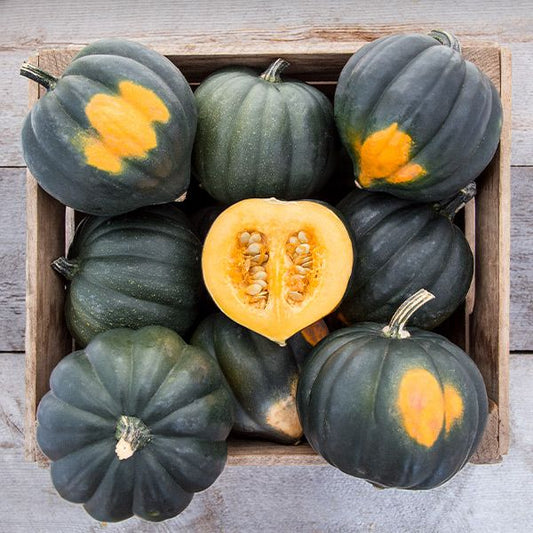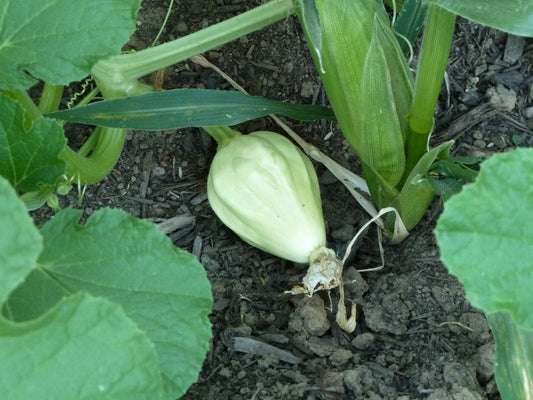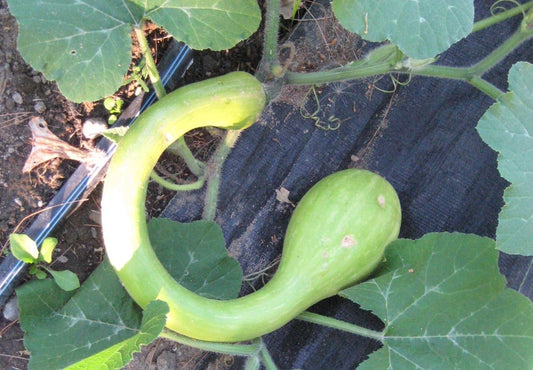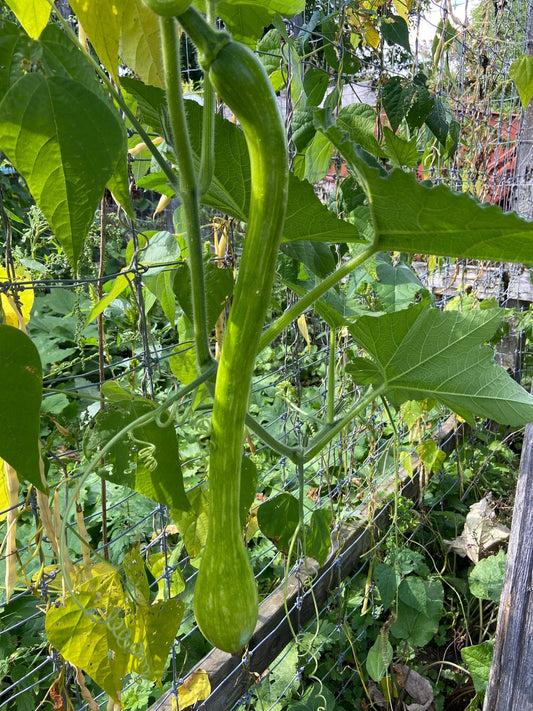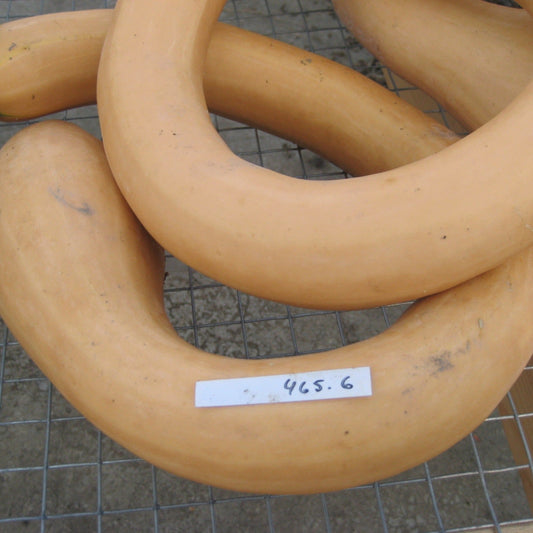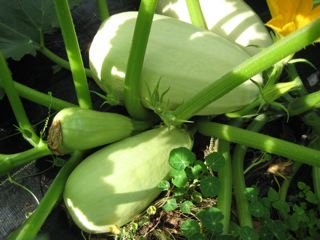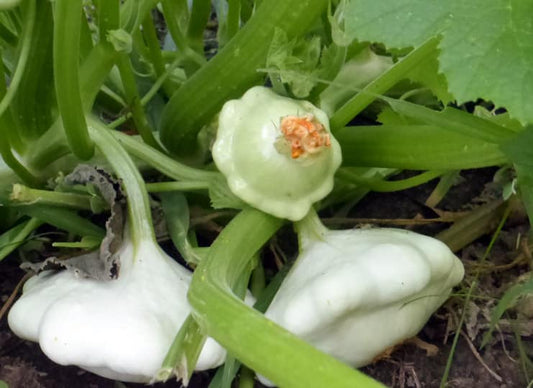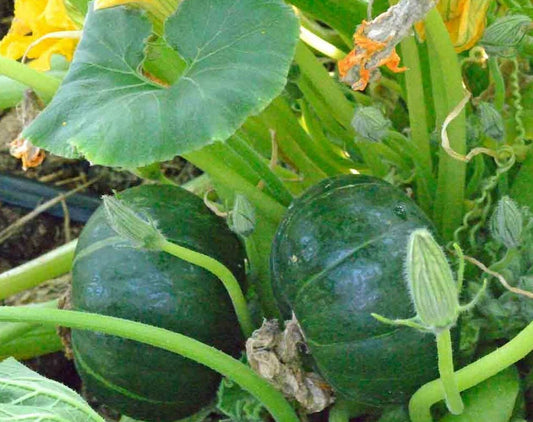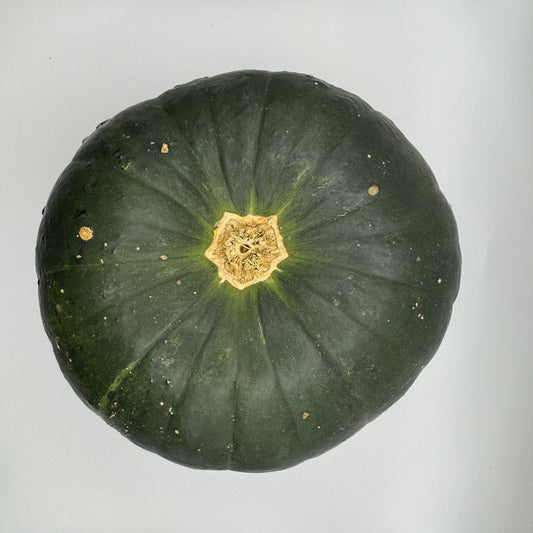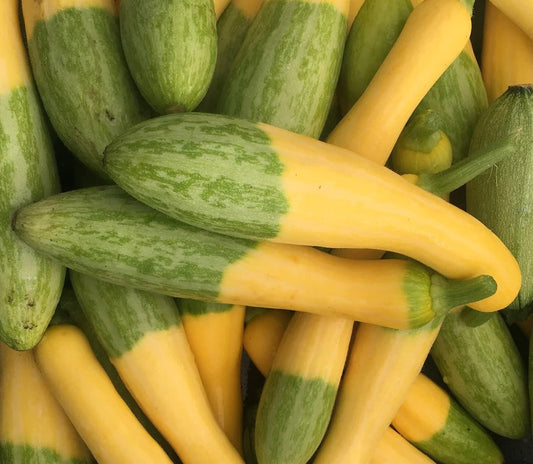Collection: SQUASH
Squash is native to North and South America. During the late 1700's squash became an important staple to New England because it was well adapted to the climate and stored throughout the winter. Today squash is still an important staple and can be used year round. Winter squash is an excellent source of vitamin A, carbohydrates and minerals. Seeds are high in vegetable proteins and fats.
CULTURE: Squash can be started indoors or outdoors.
INDOORS: Start in peat pots or 4" plastic pots 3-4 weeks before the last frost. Sow 3-4 seeds per pot.
OUTDOORS: Sow direct when soil is warm to touch and there is no danger of frost.
SOIL: Squash likes well drained, sandy loam soil. pH 5.5 -7.5
FERTILITY: Enrich with compost or well rotted manure before planting. Moisture is needed when forming fruit.
GERMINATION: 5-7 days at 75-82F/24- 28C. Seeds will rot if soil temperature is too cool and wet. SPACING: Plant bush varieties in hills 3-4 feet apart, rows spaced 6 feet apart. Full vined varieties plant hills 4-5 feet apart, rows spaced 8-10 feet.
PESTS: Cucumber beetle will damage young seedlings and flowers causing disease and poor pollination. Control with a mixture of Diatomaceous Earth, row covers, or insect netting. Squash vine borer causes wilting of the vine, the stem will be hollowed out. The only control is spraying for a small black wasp-like moth which lays eggs in a 2 week period when the plant begins to vine. Broad crop rotation also reduces chance of attack.
HARVEST: Pick after vine dies or rind hardens and dulls in colour. Cure in high temperatures and humidity (80F/27C) for a week, then store at 50-59F/10-15C, humidity of 60%.

